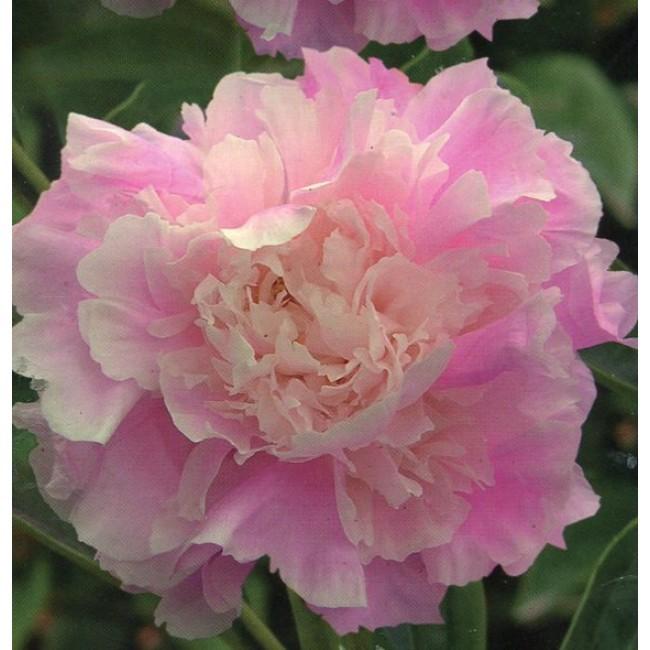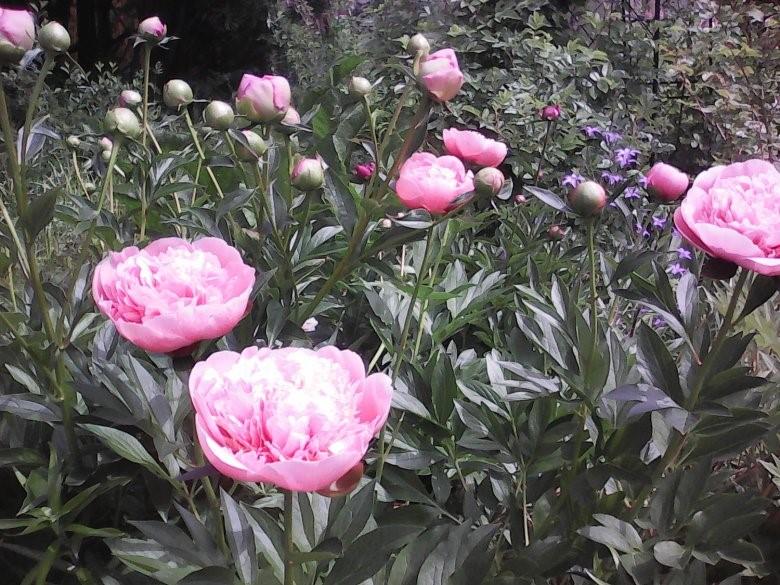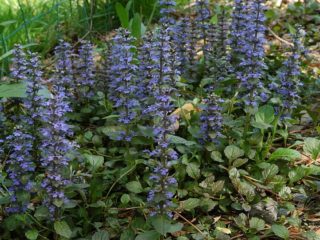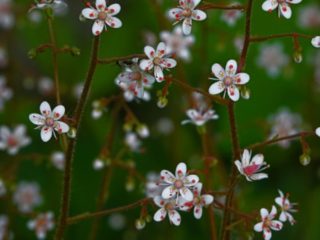Content
Peony Katharina Fontaine is a variety of Dutch selection. It has been known for more than 70 years and has taken root well in different countries due to its high winter and drought resistance. A description of this interesting variety, recommendations for planting and care can be found below.
How the variety appeared
This variety was bred in Holland (now the Netherlands) in 1952. The variety was obtained through crossing by breeders Van der Zwet and Van der Valk. Holland is mainly famous for roses, but Katharina Fonteyn is a pleasant exception in this regard. This is one of the rare varieties that was obtained specifically in the Netherlands, and has become known almost throughout the world.
Description of the milky peony Katharina Fontaine
Katharina Fontaine belongs to the milky-flowered peonies. This is one of the species on the basis of which breeders have managed to obtain many interesting varieties and hybrids. The name is due to the fact that the wild ones found in nature have pale milky petals. Although we managed to obtain dozens of varieties with pink, lilac, burgundy and other shades.
Katharina Fontaine is a perennial medium-growing shrub. Reaches a height of 80-90 cm, sometimes up to 1 m, does not spread to the sides due to straight and powerful peduncles, so it takes up a minimum of space. The leaves are trifoliate, moderately large, with a dark green rich color, both in summer and spring. They appear in large quantities, create a beautiful background, and by autumn they turn yellow and fall off.
Peony flowers Katarina Fontaine are quite large, 10-15 cm in diameter, often reaching up to 20 cm. The shape resembles pompoms, almost spherical, they look voluminous and very attractive. These are double flowers, consisting of numerous petals, which are arranged in several rows.

Peony buds Katharina Fontaine begin to bloom at the end of May
A characteristic feature is variable color. At first it is more saturated, pink tones predominate: light, salmon and even dark. But over time, they fade and become almost white, justifying the name “lacty-flowered peony.” Peony flowers Katharina Fontaine give a very strong aroma that can be smelled from a distance. The stems are strong and branch well, and they produce not only apical buds, but also lateral buds.
Attention! Katharina Fontaine has good winter hardiness. In open ground, peonies can withstand frosts down to -34 degrees, which corresponds to zone 3.
Timing and flowering period
Katarina Fontaine is a medium-late flowering peony. The buds begin to bloom at the very end of May and continue until mid-June. The flowering period lasts from 2 to 4 weeks, often lasting until the first days of July. Much depends on weather conditions, soil fertility and care.
Flowers are well suited not only for decorating the garden, but also for making bouquets; they last quite a long time when cut.At the end of flowering, the petals wither - when they are completely dry, the heads should be cut off so that the bush does not waste energy on forming seeds.
Advantages and disadvantages
Peony Katharina Fontaine is deservedly popular in different countries of the world, including Russia. It looks good in the garden and as a cut flower, valued for its numerous large double flowers that smell great and lift your spirits. This variety does not have many disadvantages, and thanks to its high winter hardiness, it can be grown in almost any Russian region.

The flowers are large, with gracefully shaped petals
Pros:
- large inflorescences;
- strong aroma;
- interesting variable coloring;
- abundant and long flowering;
- stand for a long time when cut;
- high winter hardiness;
- the variety is undemanding in care.
Minuses:
- affected by fungal diseases;
- needs regular watering.
How to plant
The rules for planting peony Katarina Fontaine are standard. If we talk about timing, it is best to focus on mid-spring - the second half of April or the beginning of May, but no later. In the south, planting in the fall is also allowed - in the middle or second half of October. But then in the first season it is better to mulch the roots with dry leaf litter.
The place for planting the Katarina Fontaine peony should be well lit, while partial shade from trees and shrubs is desirable, so that the bright sun does not lead to premature loss of color. This is especially true for this variety, because it is characterized by medium-late flowering periods, when drought is often observed.
When planning to plant the Katharina Fontaine peony, you must also take into account that it grows well in fertile and loose soils. If the soil is clayey, sand or sawdust is added to it - 2-3 kg per square meter.It is very important that the flower bed is not subject to constant flooding and does not become waterlogged. Otherwise, the root system may rot, which will lead to the death of the entire shrub.
The process of planting peony Katharina Fontaine looks like this:
- A month before the start, they dig up the soil and apply fertilizers, for example, complex mineral fertilizer (according to the instructions).
- Several holes are formed with a depth and width of 60-70 cm at a distance of 1 m (tight fit).
- Place pebbles, expanded clay or small stones on the bottom with a total layer height of 10 cm.
- Install the seedling and straighten the roots.
- Cover with fertile soil so that the root collar goes to a shallow depth of 3-4 cm.
- Then compact it a little and water it with a bucket of settled water.
- After a few days, a layer of straw or other material is laid.

Peony Katharina Fontaine is best planted in open areas
How to care
Caring for the Katharina Fontaine peony is not very difficult, since the shrub is unpretentious and tolerates not only frosts, but also summer heat. For lush and long-lasting flowering, you will need to follow a few simple rules:
- Water the young seedlings twice a week, monitoring the condition of the soil - it should not be too wet. Adult bushes are given water once a week or every 10 days, but in hot weather - 2 times more often. Do not let the soil dry out and crack. Water should only be used that has been settled, preferably at room temperature or warmer.
- After watering, as well as heavy rains, the soil must be well loosened. At the same time, if necessary, you can do weeding. To make caring for the peony easier, Katarina Fontaine recommends mulching the plantings and periodically changing the material.
- Fertilizers are given several times a season.When the snow melts, feed with urea (15-20 g per 10 l), at the beginning of the budding stage they give a complex mineral fertilizer, for example, Agricola. After 2-3 weeks, you can add the same composition or organic matter - potassium humate, bird droppings (1:20) or mullein infusion (1:10).
Preparing for winter
Peony Katharina Fontaine does not need preparation for the winter period. However, it would not be superfluous to cut off all the shoots at the end of October, leaving stumps of 3-5 cm. Then the cuts are treated with wood ash and covered with dry material, for example, leaves, straw, sawdust. Already in March, the mulch must be removed so that the buds wake up in a timely manner and begin to grow.
Reproduction methods
Peony Katharina Fontaine can be propagated quite easily by vegetative methods:
- dividing the bush;
- cuttings;
- receiving layerings.
Only adult bushes aged at least 4 years are divided, and the procedure begins in August or September. The bush is dug up and cut into several parts. Then they are treated with a pink solution of potassium permanganate or sprinkled with wood ash and coal. Planted in a new place and watered.

Thanks to vegetative propagation methods, it is possible to preserve all varietal characteristics
Cuttings are a good way to propagate the Katharina Fontaine peony at any age. At the end of May, green shoots are cut, leaves are removed from them, an oblique lower cut is made and they are placed overnight in a solution of a growth stimulator. Then they are planted under a film or covered with a jar, watered abundantly and constantly ventilated. In the fall, they are moved to a permanent place and mulched thoroughly.
Peony Katarina Fontaine can also be propagated by layering. In May, several lower shoots are placed in pre-dug grooves, pinned and covered with soil, leaving the very end of the branch.Water abundantly and feed well all summer, and at the beginning of autumn cut into several parts (each should have roots). They are transplanted to a permanent place and mulched for the winter in October.
Disease and pest control
Gardeners note that the Katharina Fontaine peony is not resistant to the botrytis fungus, so when growing, you should carefully follow the watering regime. It is advisable to give water not too often, but in large volumes. And if the summer is rainy, watering can be stopped completely. If, nevertheless, the shrub has suffered from this or other infections, you need to carry out 1-2 treatments with fungicides (both sick and healthy plants):
- "HOM";
- "Bordeaux mixture";
- "Maksim";
- "Ordan".
Sometimes the Katharina Fontaine peony can also suffer from insects, for example, aphids, thrips, and ants. Insecticides are used to kill pests. In the early morning or late evening, treatment is carried out with the following drugs:
- "Colorado";
- "Match";
- "Aktara";
- "Agravertine".
Application in landscape
Peony Katharina Fontaine looks good in single plantings. Usually it is placed in plain sight - next to the entrance, gazebo, bench, pond. Several options for using flowers to decorate the garden are shown below:
- Single landing.
- Monoclumba.
- Landing in an open area.
Conclusion
Peony Katharina Fontaine is a truly beautiful flower that can be admired for 3-4 weeks. It has an interesting changeable color and a very powerful aroma. The flowers are large and last a long time when cut, so they are also suitable for bouquets. Since the culture is unpretentious, almost any gardener can cope with cultivation.
Reviews from flower growers about peony Katarina Fontaine











